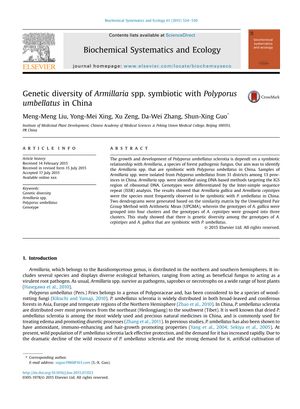Genetic Diversity of Armillaria Species Symbiotic with Polyporus Umbellatus in China
July 2015
in “
Biochemical Systematics and Ecology
”

TLDR Different types of Armillaria fungus have a high genetic variety when partnering with Polyporus umbellatus mushrooms in China.
The study investigated the genetic diversity of Armillaria species symbiotic with Polyporus umbellatus across 31 districts in 13 provinces of China. DNA-based methods were used to identify Armillaria gallica and Armillaria cepistipes as the most common symbiotic species. Inter-simple sequence repeat (ISSR) analysis revealed that A. gallica had four genetic clusters and A. cepistipes had three, indicating significant genetic diversity. The study included 16 genotypes of A. gallica and 12 genotypes of A. cepistipes, and found no strict correlation between genotype clustering and geographical location. The findings suggest that P. umbellatus can form symbiotic relationships with various Armillaria species, which exhibit a high level of genetic variation. The research received funding from the National Natural Sciences Foundation of China.